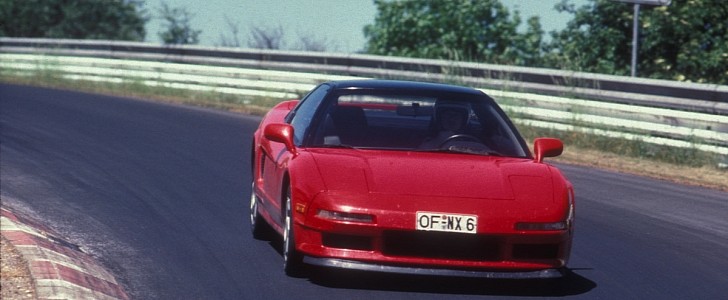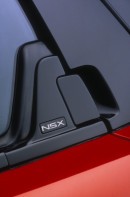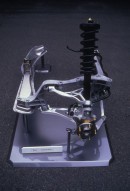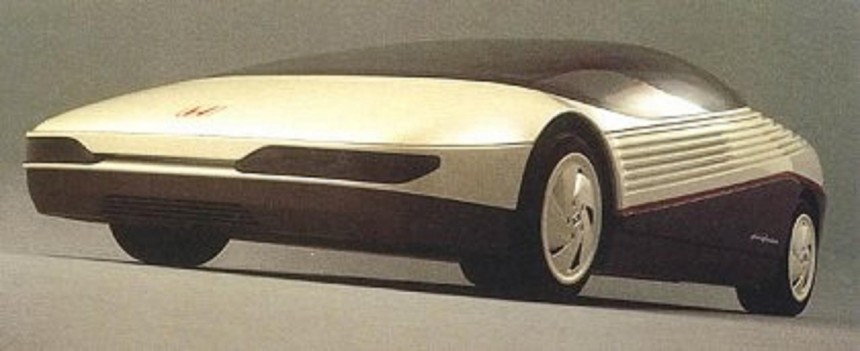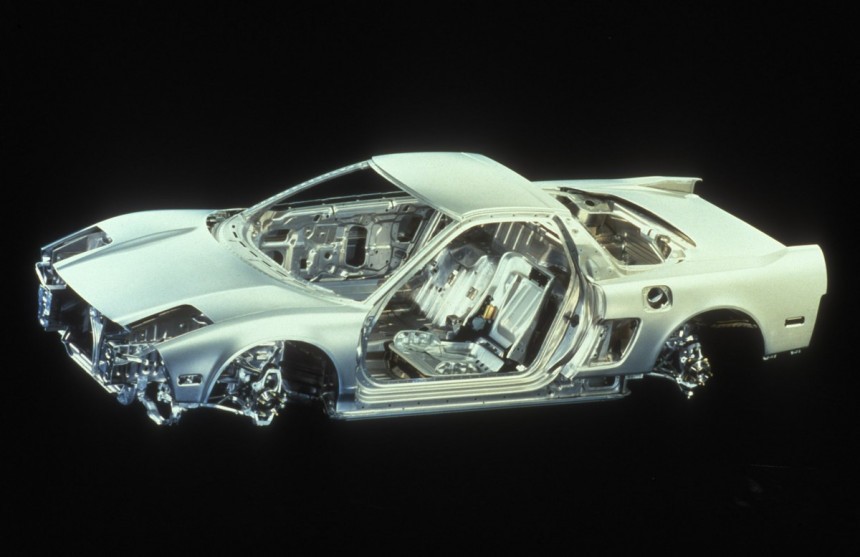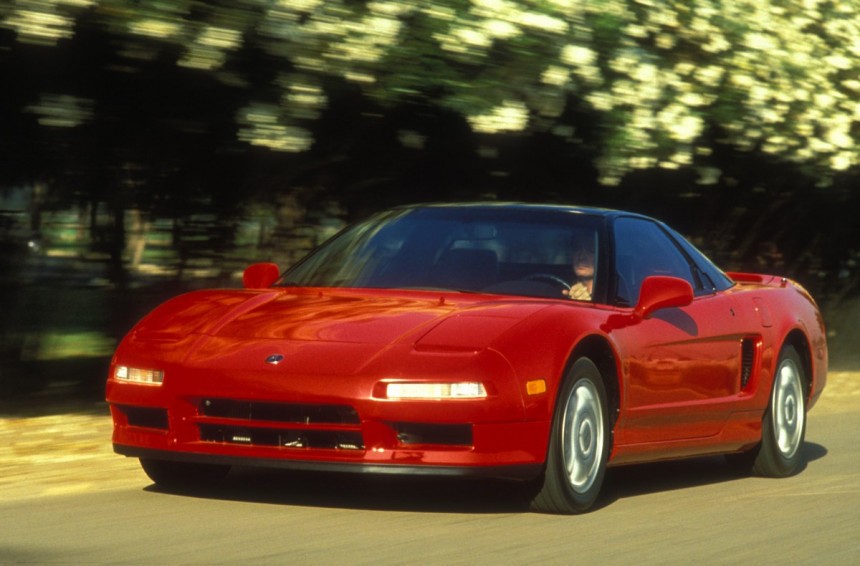It was unusual, and it still is, for a mass-market car producer to create a vehicle designed for enthusiasts. Still, Honda took the challenge, created the first Japanese supercar, and admitted that it was an experiment, hiding that in plain sight: into the nameplate.
This October is Iconic Vehicles Month here at autoevolution, and the first Japanese supercar deserves a place here. Of course, we are talking about Honda's New Sportscar eXperimental or, for short, the NSX.
Its story started in 1963 when Soichiro Honda decided to evolve the company from a motorcycle manufacturer to a carmaker. In 1963 Honda produced the T360 lightweight truck and, four months later, the S500 roadster. It was the beginning of its car-making career. By the 1980s, Honda was already known for its reliable, high-revving engines. But it lacked the knowledge on building a genuine sports car. Yes, it was an engine supplier for Formula 1 and Formula 2, but its engineers didn't know how to build a chassis for that.
Then, the idea of a Japanese supercar took off. It all started with a white sheet of paper. The engineers already knew that they had to place the engine behind the cockpit. To test their abilities, they transformed a bland Honda City into a mid-engine vehicle. The results were far better than expected, and the R&D department asked Mr. Honda for funding a full-scale concept car. Surprisingly, the answer was "yes," and the amount of cash thrown into that included a bodywork designed by no other than Pininfarina, the main Ferrari designer.
Enter the HP-X, or Honda-Pininfarina-eXperimental. It was a 1984 concept car designed by the Italians or the Japanese carmaker. It featured a four-seat layout and a mid-mounted two-liter V6 engine carried over directly from Formula 2 series. While the HP-X looked stunning with its transparent canopy, it was useless during sunny or rainy days. But the whole idea was to research the ground-effect advantages of a sports car.
In the autumn of 1982, at the Frankfurt Motor Show, Ferrari unveiled the 328. It was the car that Honda aimed to beat. The Japanese engineers decided to install a V6 powerplant for their project. Honda already had a 3.0-liter V6 with dual-overhead camshafts (DOHC) and four valves per cylinder in its parts bin. But placing that engine behind the cabin forced the carmaker to stretch the wheelbase and make room for it. Moreover, to make things even better, the newly-developed VTEC system was added to the mix and raised the power to 280 hp. Thanks to its titanium connecting rods, the rev-counter could reach 8,000 rpm.
Cutting the weight of a supercar is a great idea, and Honda used it despite the massive costs. While it didn't have the hydroforming technology or the glued chassis option as the latter developed Lotus Elise, it had the welding process that made it happen. By using an aluminum bodywork, it managed to save almost 200 kilos (440 lbs) from the vehicle's weight when compared to a steel-body vehicle, resulting in a 1,370 kg (3,010 lbs) mid-engined car. It was more than the 3,000 lbs planned, but still heavier than the F328, which had 2,784 lbs (1,263 kg)
For suspension, Honda also used aluminum arms and rods and then, it invited famous F1 champion, Ayrton Senna, to drive the car and give his input. The Japanese engineers were concerned that he wouldn't like it because it was a rigid vehicle. Yet, when the Brazilian F1 driver stepped down, among his first words was "it's too flimsy, make it stiffer."
For that, Honda employed first full-time Japanese F1 driver Satoru Nakajima to continue the development. After eight months spent on the Nurburgring race track, the NSX was ready. Finally, it exceeded Ferrari's 328 handling characteristics, and it was easier to drive it fast. Moreover, it proved to be a better car even than the 1989 Ferrari 348.
When the carmaker unveiled the NSX at the 1989 Chicago Auto Show, it was a complete surprise, even though it wasn't the production vehicle. That came in 1990, and then it was hand-built mainly by 200 engineers. Ken Okuyama penned the exterior design and finished it at Pininfarina design studio. With a greenhouse inspired by the F-16 fighter jet, the NSX offered a way better visibility than most supercars from that era.
Honda's experience in designing vehicles for the masses showed its value on the inside, where all the switches, levers, and buttons were easy to see and reach. Moreover, it was comfortable and straightforward to use. Last but not least, it was reliable. Anyone who owned a Ferrari had to admit that the Japanese carmaker slammed the door over the Italian fingers with that.
But it was an expensive car for those times. It was priced around $60,000 ($123,000 in 2021 money). For a Honda, that was a huge sticker price. Just imagine that a 1990 Accord had a base price of under $15,000. Yes, it was reliable, fast, comfortable, and had a sleek image, but it had a similar price to a Porsche 911. So despite beating all its competitors, including the mighty 'Vette ZR1 in comparison tests, the NSX couldn't convince the customers. By the end of 2005, when the first generation stopped, Honda and Acura sold together 18,000 units.
There are many examples of other crappy cars that sold well, but the NSX is living proof that sometimes an excellent car is ditched by customers who prefer a stallion on the hood instead of a chromed H-badge. While it didn't beat Ferrari on its own game, it confirmed the saying that, every now and then, a soldier might be right when and a general can be wrong.
Its story started in 1963 when Soichiro Honda decided to evolve the company from a motorcycle manufacturer to a carmaker. In 1963 Honda produced the T360 lightweight truck and, four months later, the S500 roadster. It was the beginning of its car-making career. By the 1980s, Honda was already known for its reliable, high-revving engines. But it lacked the knowledge on building a genuine sports car. Yes, it was an engine supplier for Formula 1 and Formula 2, but its engineers didn't know how to build a chassis for that.
Then, the idea of a Japanese supercar took off. It all started with a white sheet of paper. The engineers already knew that they had to place the engine behind the cockpit. To test their abilities, they transformed a bland Honda City into a mid-engine vehicle. The results were far better than expected, and the R&D department asked Mr. Honda for funding a full-scale concept car. Surprisingly, the answer was "yes," and the amount of cash thrown into that included a bodywork designed by no other than Pininfarina, the main Ferrari designer.
In the autumn of 1982, at the Frankfurt Motor Show, Ferrari unveiled the 328. It was the car that Honda aimed to beat. The Japanese engineers decided to install a V6 powerplant for their project. Honda already had a 3.0-liter V6 with dual-overhead camshafts (DOHC) and four valves per cylinder in its parts bin. But placing that engine behind the cabin forced the carmaker to stretch the wheelbase and make room for it. Moreover, to make things even better, the newly-developed VTEC system was added to the mix and raised the power to 280 hp. Thanks to its titanium connecting rods, the rev-counter could reach 8,000 rpm.
Cutting the weight of a supercar is a great idea, and Honda used it despite the massive costs. While it didn't have the hydroforming technology or the glued chassis option as the latter developed Lotus Elise, it had the welding process that made it happen. By using an aluminum bodywork, it managed to save almost 200 kilos (440 lbs) from the vehicle's weight when compared to a steel-body vehicle, resulting in a 1,370 kg (3,010 lbs) mid-engined car. It was more than the 3,000 lbs planned, but still heavier than the F328, which had 2,784 lbs (1,263 kg)
For that, Honda employed first full-time Japanese F1 driver Satoru Nakajima to continue the development. After eight months spent on the Nurburgring race track, the NSX was ready. Finally, it exceeded Ferrari's 328 handling characteristics, and it was easier to drive it fast. Moreover, it proved to be a better car even than the 1989 Ferrari 348.
When the carmaker unveiled the NSX at the 1989 Chicago Auto Show, it was a complete surprise, even though it wasn't the production vehicle. That came in 1990, and then it was hand-built mainly by 200 engineers. Ken Okuyama penned the exterior design and finished it at Pininfarina design studio. With a greenhouse inspired by the F-16 fighter jet, the NSX offered a way better visibility than most supercars from that era.
Honda's experience in designing vehicles for the masses showed its value on the inside, where all the switches, levers, and buttons were easy to see and reach. Moreover, it was comfortable and straightforward to use. Last but not least, it was reliable. Anyone who owned a Ferrari had to admit that the Japanese carmaker slammed the door over the Italian fingers with that.
There are many examples of other crappy cars that sold well, but the NSX is living proof that sometimes an excellent car is ditched by customers who prefer a stallion on the hood instead of a chromed H-badge. While it didn't beat Ferrari on its own game, it confirmed the saying that, every now and then, a soldier might be right when and a general can be wrong.
